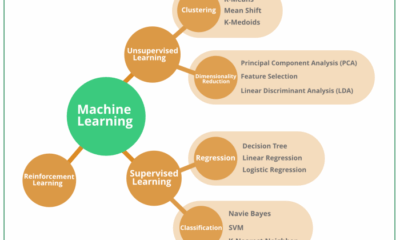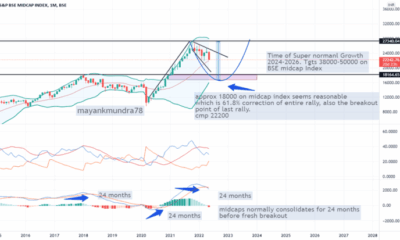Business
Exploring Digilifes Digital Transformation Case Studies

Embark on a journey through digilife digital transformation case studies, delving into the realm of digital evolution and success stories that shape industries.
As we uncover the intricacies of digital transformation within Digilife, we unravel the transformative power of technology and innovation.
Overview of Digilife Digital Transformation Case Studies
In the context of Digilife, digital transformation refers to the strategic integration of digital technologies to fundamentally change how the organization operates and delivers value to its customers. This includes leveraging data analytics, cloud computing, artificial intelligence, and other digital tools to enhance business processes, improve customer experiences, and drive innovation.
Case studies play a crucial role in understanding digital transformation initiatives as they provide real-world examples of how companies have successfully implemented digital strategies to achieve their goals. By analyzing these case studies, organizations can gain valuable insights into best practices, challenges faced, and the overall impact of digital transformation on business outcomes.
Examples of Successful Digital Transformation Case Studies
- Company A: Company A, a traditional brick-and-mortar retailer, successfully transformed its business model by implementing an omnichannel strategy that integrated its online and offline sales channels. This resulted in increased sales, improved customer engagement, and enhanced operational efficiency.
- Company B: Company B, a financial services firm, used robotic process automation and machine learning algorithms to streamline its back-office operations and automate repetitive tasks. This led to significant cost savings, faster processing times, and improved accuracy in decision-making.
- Company C: Company C, a healthcare provider, adopted telemedicine solutions and remote monitoring technologies to increase access to care, improve patient outcomes, and reduce healthcare costs. This digital transformation initiative enabled the organization to reach a wider patient base and deliver more personalized healthcare services.
Challenges Faced in Digital Transformation
Embarking on a digital transformation journey can be fraught with challenges for companies looking to adapt to the rapidly evolving digital landscape. These challenges often range from technological barriers to organizational resistance to change.
Integration of Legacy Systems
One of the common challenges encountered during digital transformation is the integration of legacy systems with new digital technologies. Many companies struggle to connect their outdated systems with modern solutions, leading to inefficiencies and data silos.
Cultural Resistance to Change
Another significant challenge is the resistance to change within the organization's culture. Employees may be reluctant to embrace new technologies or processes, leading to pushback and hindering the digital transformation efforts.
Data Security and Privacy Concerns
Data security and privacy concerns pose a major hurdle in digital transformation initiatives. With the increasing threat of cyberattacks and data breaches, companies must ensure the protection of sensitive information while transitioning to digital platforms.
Skills Gap and Training Needs
The skills gap and training needs are also common challenges faced by companies during digital transformation. Employees may lack the necessary skills to operate new digital tools effectively, highlighting the importance of training and upskilling initiatives.
Digilife's Approach to Addressing Challenges
Digilife tackled these challenges in their case studies by implementing comprehensive training programs to upskill employees, fostering a culture of innovation and agility within the organization, and prioritizing data security measures in their digital transformation initiatives.
Comparison of Challenges Faced by Different Companies
While the challenges mentioned above are common across industries, the specific hurdles faced by different companies can vary based on their unique circumstances and objectives. Some companies may struggle more with legacy system integration, while others may face greater resistance to change within their organizational culture.
Strategies and Solutions Implemented
During their digital transformation journey, Digilife employed a variety of strategies and solutions to enhance their operations and customer experiences.
Utilization of Cloud Computing
- One key strategy implemented by Digilife was the adoption of cloud computing technology. This allowed them to scale their operations, improve flexibility, and enhance data security.
- By leveraging cloud services, Digilife was able to streamline their processes, reduce costs, and increase efficiency across their organization.
Implementation of Data Analytics
- Digilife utilized data analytics tools to gain valuable insights into customer behavior, market trends, and operational performance.
- By analyzing data effectively, Digilife was able to make informed decisions, personalize customer experiences, and optimize their business processes.
Integration of Artificial Intelligence
- Another critical strategy was the integration of artificial intelligence (AI) technologies into their operations. AI-powered solutions helped Digilife automate tasks, improve decision-making, and enhance productivity.
- Through AI, Digilife was able to offer personalized recommendations, predictive maintenance, and intelligent automation, leading to increased customer satisfaction and operational efficiency.
Impact and Results of Digital Transformation
Digital transformation has significantly impacted Digilife's operations, customer experience, and overall business growth. By embracing digital technologies, the company has streamlined its processes, enhanced customer interactions, and accelerated its expansion in the market.
Operational Efficiency
Following the implementation of digital transformation initiatives, Digilife experienced a notable improvement in operational efficiency. Automation of manual tasks, integration of systems, and real-time data analytics have optimized workflows, reduced errors, and increased productivity across departments.
Enhanced Customer Experience
The digital transformation efforts have also led to a marked enhancement in customer experience. Through personalized communication, seamless omnichannel interactions, and quick issue resolution, Digilife has managed to foster stronger relationships with its customers. This has resulted in higher satisfaction rates and increased customer loyalty.
Business Growth and Market Positioning
As a result of digital transformation, Digilife has experienced substantial business growth and improved market positioning. By leveraging data-driven insights, the company has been able to identify new market opportunities, launch innovative products and services, and stay ahead of competitors.
This has not only boosted revenue but also solidified Digilife's position as a market leader in the digital space.
Final Review

In conclusion, the impact of digital transformation on Digilife is evident through enhanced operations, customer experiences, and a fortified competitive edge in the market.
Questions Often Asked
What is the significance of case studies in understanding digital transformation initiatives?
Case studies provide real-life examples of successful digital transformations, offering insights into strategies and challenges faced.
How did Digilife address specific challenges in their digital transformation case studies?
Digilife tackled challenges through innovative strategies, leveraging technologies to overcome obstacles and drive success.
What measurable results were achieved post-digital transformation implementation by Digilife?
Post-implementation, Digilife experienced improved operations efficiency, enhanced customer satisfaction, and increased market competitiveness.

-

 Investing2 months ago
Investing2 months agoSilver MCX Live Price with Real Time Updates: A Comprehensive Guide
-

 Trading2 months ago
Trading2 months agoSilver MCX Live Price Real Time Updates: Stay Ahead in the Trading Game
-

 technology2 months ago
technology2 months agoExploring Machine Learning Algorithms: A Comprehensive Guide
-

 Finance2 months ago
Finance2 months agoExploring BSE Midcap Index Today Market Insights
-

 technology2 months ago
technology2 months agoUnveiling the Power of Digilife Business Intelligence Solutions
-

 technology2 months ago
technology2 months agoUnveiling the Future: Digilife Global Technology Trends 2025
-

 Personal Finance2 months ago
Personal Finance2 months agoCrafting Your Wealth: Smart Dollar Wealth Building Strategies
-

 Finance2 months ago
Finance2 months agoUnlocking AI Investment Opportunities: A Comprehensive Guide



